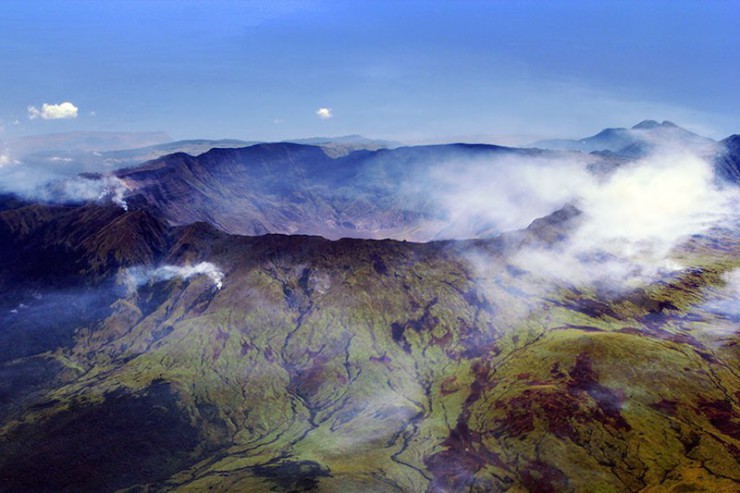Pop cultural renditions of Mary Shelley’s Frankenstein would have you believe that a bolt of lightning is what brings Frankenstein’s monster to life… but did you know that it was actually all thanks to a volcano?
Mary Shelley first conceived of her modern Prometheus as a ghost story, dreamed up as part of a challenge with her lover Percy Bysshe Shelley and her stepsister Claire Clairmont on an incessantly rainy 1816 trip to Geneva, Switzerland. Fighting off cabin fever, they competed to see who could come up with the most chilling tale—Mary won, and published her novel two years later.
 Now, just in time for Frankenstein‘s bicentennial anniversary, a recent episode of BBC Radio’s In Our Time establishes more context for the story: In 1815, on an island in Indonesia, Mount Tambora erupted, throwing thirty-eight cubic miles of volcanic ash and magma into the air. The largest observed eruption in recorded history, it is estimated to have killed at least 70,000 people; furthermore, it released enough sulfur dioxide into the atmosphere to drastically alter the temperature for at least a year afterwards. As Melvyn Bragg and his guests note in In Our Time, this was why 1816 is often referred to as the Year Without a Summer.
Now, just in time for Frankenstein‘s bicentennial anniversary, a recent episode of BBC Radio’s In Our Time establishes more context for the story: In 1815, on an island in Indonesia, Mount Tambora erupted, throwing thirty-eight cubic miles of volcanic ash and magma into the air. The largest observed eruption in recorded history, it is estimated to have killed at least 70,000 people; furthermore, it released enough sulfur dioxide into the atmosphere to drastically alter the temperature for at least a year afterwards. As Melvyn Bragg and his guests note in In Our Time, this was why 1816 is often referred to as the Year Without a Summer.
Jane Stabler, Professor in Romantic Literature at the University of St. Andrews, makes the case for clear causality:
Two things bring them together. The will of a woman—so, Claire Clairmont’s determination to meet up with Lord Byron again—and the weather bring that group together on the shores of Lake Geneva. If the weather had been fine and sunny, they would have spent much more time boating and touring. […] But because the weather’s bad, they’re confined indoors; they exhaust conversation and the literature that’s to hand, and they start writing ghost stories.
Mentions of the Year Without a Summer also show up in their diaries, Stabler says:
They give us local details, so we know, for example, that when the Shelley party crossed France, they’re told that the spring’s been much delayed, there’s much more snow than normal; so they have to hire ten men and four horses to get their carriage over the mountains to Geneva. Once they’re there, they talk about the thunderstorms—they actually enjoy watching the thunderstorms, although occasionally they get drenched by them, soaked to the skin. So, there’s an experience both of the aesthetic spectacle of thunder and lightning, but also the discomfort.
No wonder, then, that with the bizarre frosts and heavy rains all over North America and Europe, that Mary Shelley and her loved ones would feel in the mood to share ghost stories. Hat-tip to Robert P. Baird at The Paris Review for finding out this cool tidbit about Frankenstein‘s history.










